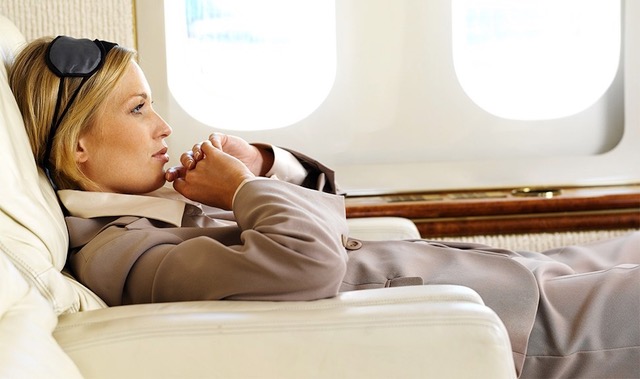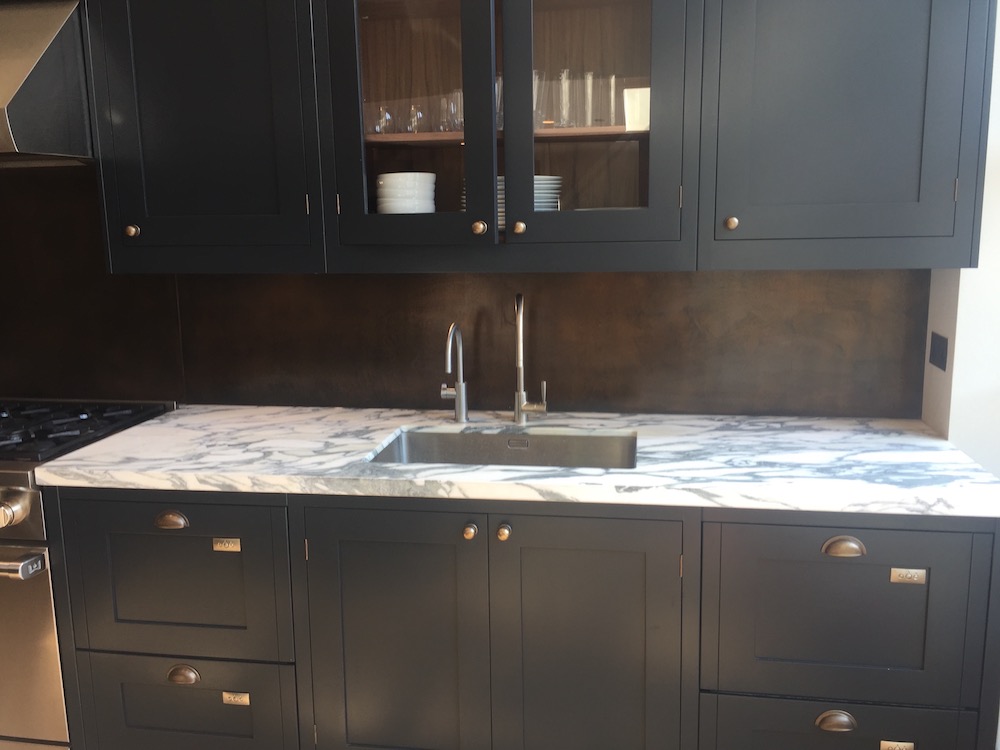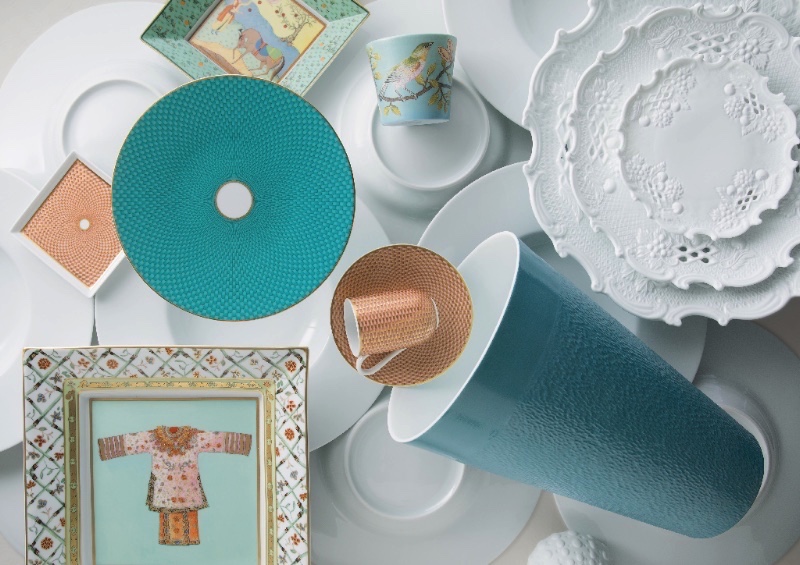
Table Setting Etiquette | Almost Essential
We often get asked for advice on table settings. We bring to you a set of key rules of table setting, and some ideas on how to make it exciting and new every time. We presented this Table Setting Guide at Manuela Hamilford’s Luxury Table Setting event in Kensington.
A table setting consists of a dining set, a cutlery set and glassware.
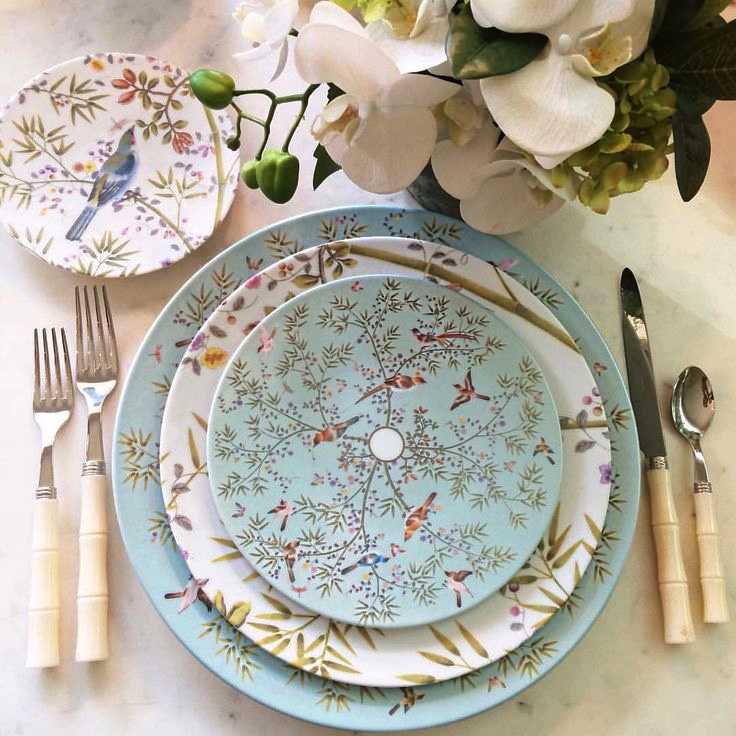
The plate is always in the center of the place setting.
The flatware, plate, and napkin should be one inch from the edge of the table. Silverware should be lined up, with the ends lining up with the bottom ridge of the charger.
The dinner fork is placed at the left of the plate.
If a salad fork is used, it is placed to the left of the dinner fork.
The knife is placed to the right of the plate with the sharp blade facing in towards the plate.
If a soup spoon is needed, it is placed to the right of the knife.
The soup or pasta bowl may be placed on the dinner plate.
The foundation of a formal setting (and what sets it apart from a typical dinner setting) is the presence of a charger – a decorative base plate on which all the other service plates rest. Because it is used purely for decorative purposes, a charger is often more elaborately designed than its practical counterparts, making it a luxurious addition to your table.
The drinking glass is placed at the tip of the knife.
Larger red wine glasses go to the back, smaller white wine glasses are placed in front of and the water glass should be closest to the table setting, just above the dinner knife.
Dessert utensils can either be placed above the plate, or they can be brought out with the dessert plates at the end of the meal, when everything else has been cleared away.
Traditionally, the butter knife is placed on its plate diagonally across – and that plate sits to the left of the entire place setting, above the forks.
The napkin is placed to the left of the fork, with the fold on the left. It can also go under a fork, or on top of the plate. Debrett’s suggests placing the napkin on the side plate – that works best on large tables, or at very formal events. For very formal occasions, the napkin should be crisp white, not embroidered. Embroidered are perfect for less formal occasions, for lunches, breakfasts and any time of outdoors eating, including yachts.
The tea or coffee cup is usually presented later, but can be placed at the beginning of the meal, too. In this case, it is placed to the top right of the spoon.
FORKS
A very useful and easy to use tip for remembering these many rules comes from the last century’s etiquette expert, Emily Post: just use the word FORKS. The “F” is for forks, followed by the round “O” shape of the plate. Forget the “R,” and move on to “K,” which represents the knives. The “S” stands in for – you guessed it! – the spoons.
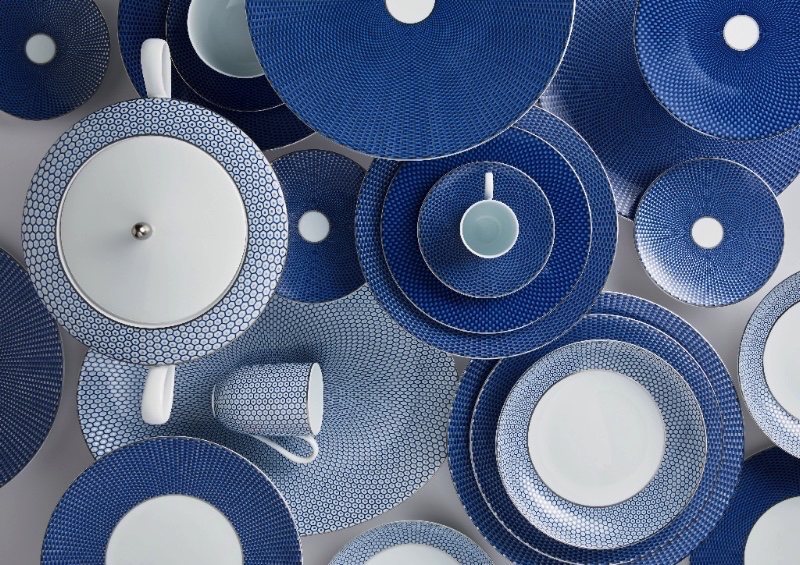
GLASSWARE
Just as the silverware is placed in order of use, so, too, are the glasses.
The water glass should remain on the table from the very beginning to the very end of the whole soirée, and it’s typically placed closest to the plates.
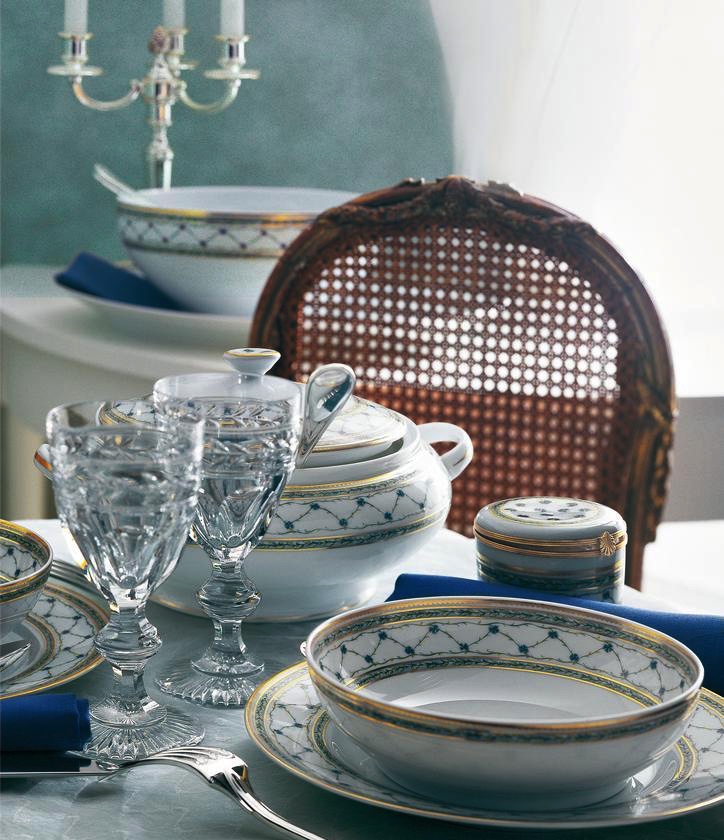
Take the example of a dinner that begins with a soup course paired with sherry. In this situation, the sherry glass would be on the right, closest to the plate. Now, imagine the soup course is followed by a fish course paired with white wine. You’d preemptively place the wine glass next to the sherry glass, further away from the center of the setting. After that, perhaps you’d like a toast at the end of the meal. In that case, the champagne glass would be placed at the rightmost corner of the setting, to the right of all the other glasses.
If you choose to start your meal with a glass of champagne or prosecco, then the champagne flute would be before the water glass.
CENTREPIECES
There are some key considerations when selecting the centrepieces. Flowers should not be so overly fragrant that they overpower the food; centrepieces should be low enough so that diners can see each other across the table.
Candles should not be lit until it is dusk or later, though you might be able to get away with lighting them earlier on overcast days. Traditionally, formal dinner candles are white or ivory, and fragrant candles are a definite no-go. Keep in mind that the food should always be the main event.
OTHER CONSIDERATIONS
Give each person as much elbow room as the table permits. Leave an even amount of space between places. Consider the look, the aesthetics of the table. If it’s a large table with few guests, perhaps space the plates out; you then should also space out your flatware, and consider the distance from your knife to your plate; you can add ornamental knife holders, or maybe spread some decorations, leaves, or small condiment dishes.
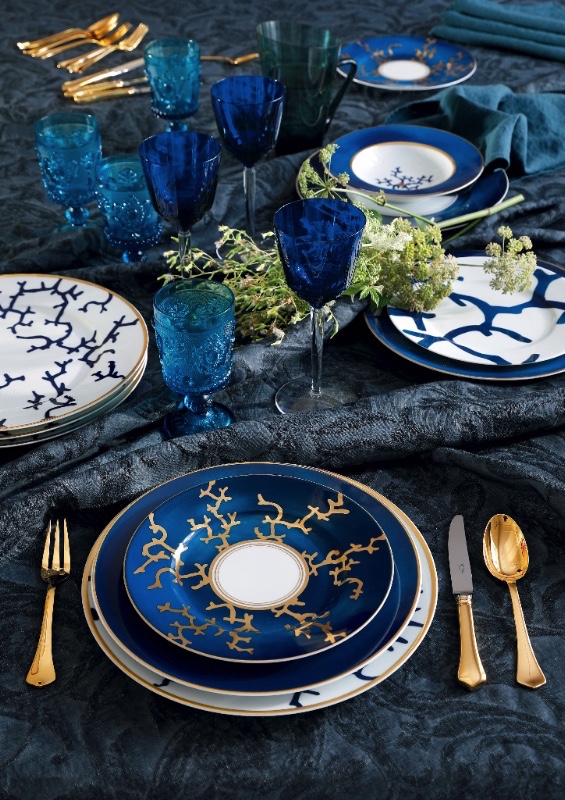
Don’t forget to have fun with it!
“Table setting is akin to getting dressed for the day: you create it by layers, starting with basics, and adding accents and accessories. You can mix and match any patterns, as long as you have a good basic colour palette with several matching colours” – says Marie Daage, a renowned French porcelain artist.
“Like with the wardrobe staple, ‘little black dress’, new excitement in table setting is created by changing just a plate or cup. The table is a reflection of who you are. Dress it tastefully as you would yourself – and create an environment that invites one to dine!”
